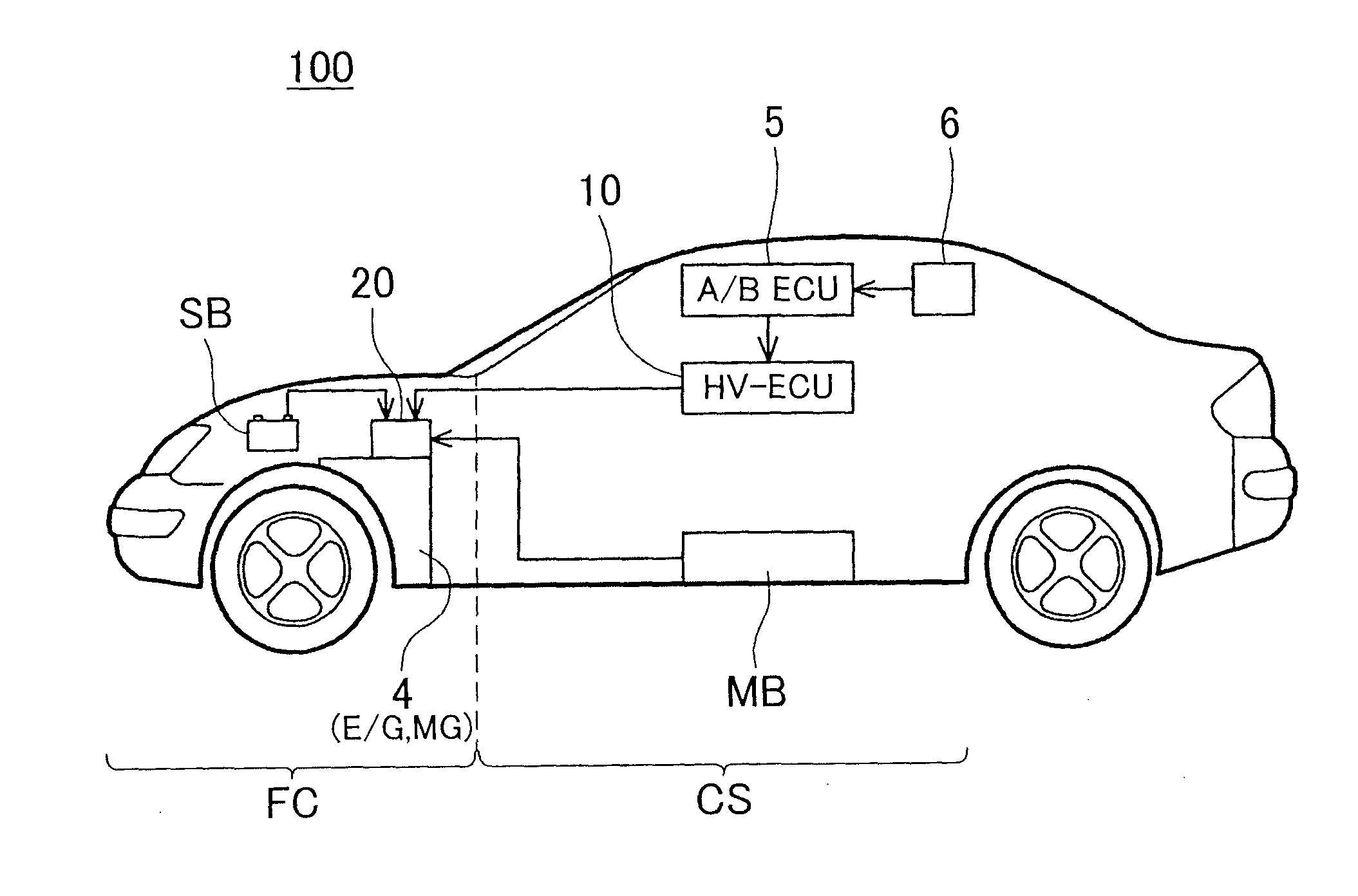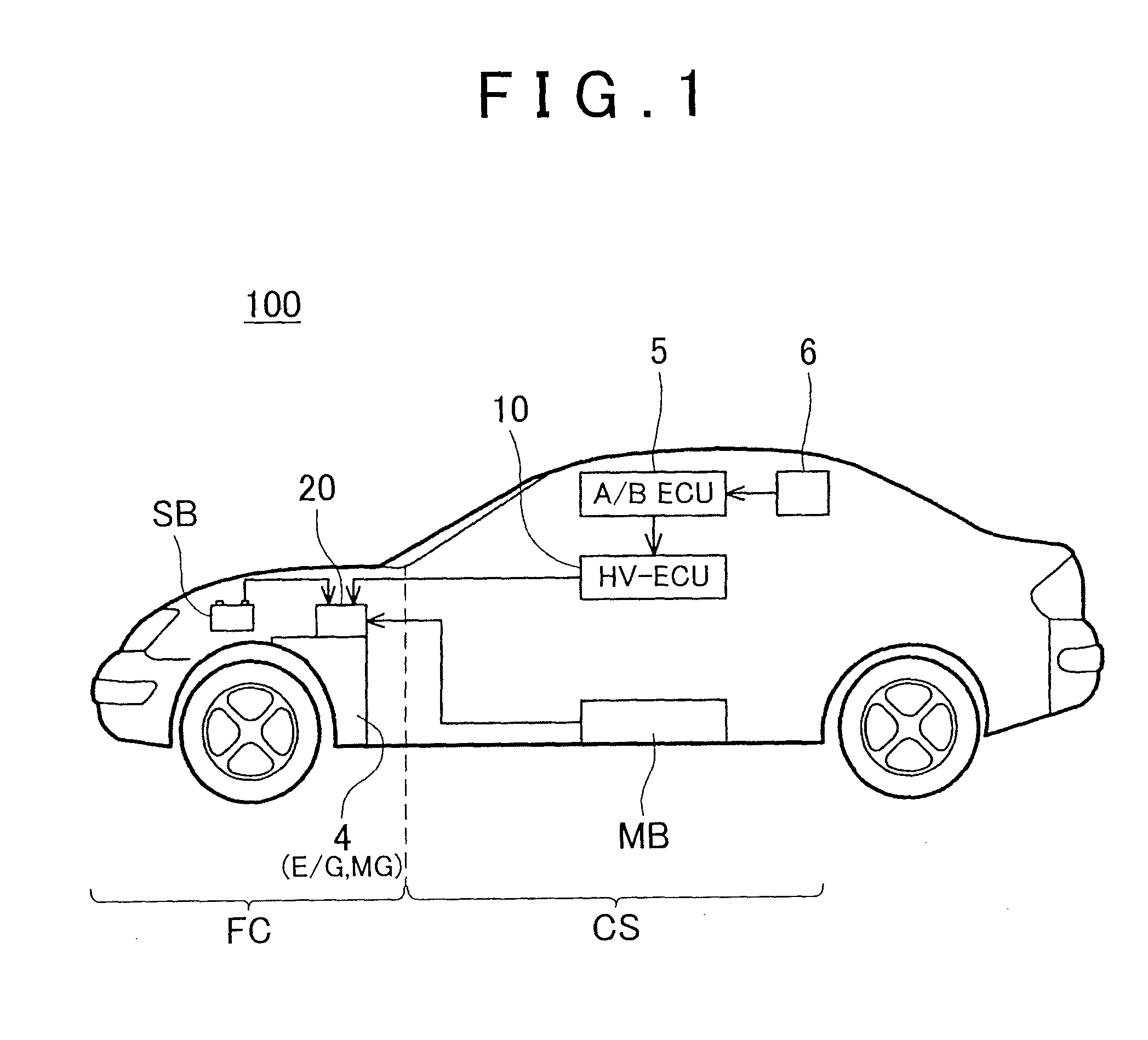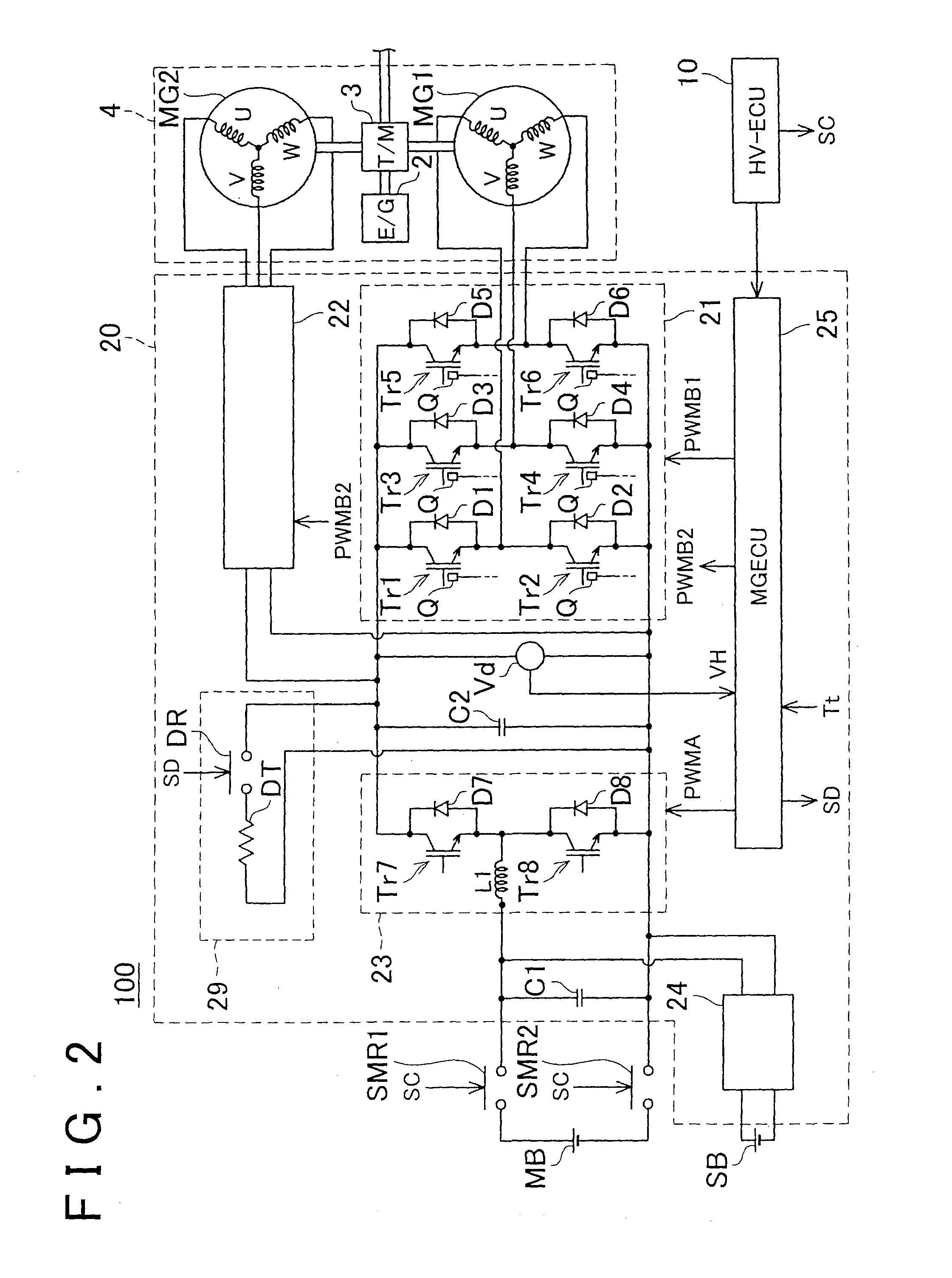Motor vehicle having traction motor
- Summary
- Abstract
- Description
- Claims
- Application Information
AI Technical Summary
Benefits of technology
Problems solved by technology
Method used
Image
Examples
first embodiment
[0029]A motor vehicle in accordance with a first embodiment of the invention will be described with reference to the accompanying drawings. A motor vehicle 100 of the first embodiment is a hybrid vehicle including an engine 2 and two electric motors (MG1 and MG2). FIG. 1 shows a schematic system block diagram of the motor vehicle 100. FIG. 2 shows a control block diagram showing an internal construction of a power controller 20 that controls the two electric motors MG1 and MG2. It is to be noted that the system block diagram of FIG. 1 shows only units related to the invention while various units that the motor vehicle 100 has are omitted from the illustration. Besides, the “power controller” is sometimes termed the power control unit (PCU) as well.
[0030]The power controller 20 converts output voltage of a main battery MB into a voltage suitable for electric motor control, and converts the converted direct-current (DC) power into alternating-current (AC) power, and supplies the conve...
second embodiment
[0046]Next, a second embodiment of the invention will be described. The construction of a motor vehicle in accordance with the second embodiment is the same as that in the first embodiment, and description thereof will be omitted. The motor vehicle of the second embodiment uses the power transistors (Tr1 to Tr6) provided in the inverter and the electric motors MG1 and MG2 as discharge devices. Therefore, a process that the electric motor controller 25 executes upon detection of a collision is different from the process executed in the first embodiment. FIG. 5 shows a flowchart of a process that the electric motor controller 25 executes upon receiving the collision signal (discharge command) from the HV controller 10. Similarly to the first embodiment, the HV controller 10, upon receiving the collision signal from the airbag controller 5, sends a collision signal (discharge command) to the electric motor controller 25, and opens the system main relays SMR1 and SMR2.
[0047]When the pro...
third embodiment
[0050]Next, a vehicle in accordance with a third embodiment of the invention will be described. The hardware construction of the motor vehicle of the third embodiment is basically the same as the hardware construction of the motor vehicles of the first and second embodiments shown in FIGS. 1 and 2. However, in the motor vehicle of the third embodiment, the discharge module 29 has its own controller, and the controller performs various determinations on the basis of signals from other controllers (concretely, the motor controller 25). In the motor vehicle of the third embodiment, the airbag controller 5, the HV controller 10, the electric motor controller 25 and the discharge module (the discharge module's own controller) take their shares of the process related to the discharging. FIG. 6 shows a flowchart of a discharge process in the third embodiment.
[0051]Firstly, the sensor data obtained by the acceleration sensor 6 is sent to the airbag controller 5 (S101). The airbag controller...
PUM
 Login to View More
Login to View More Abstract
Description
Claims
Application Information
 Login to View More
Login to View More - R&D
- Intellectual Property
- Life Sciences
- Materials
- Tech Scout
- Unparalleled Data Quality
- Higher Quality Content
- 60% Fewer Hallucinations
Browse by: Latest US Patents, China's latest patents, Technical Efficacy Thesaurus, Application Domain, Technology Topic, Popular Technical Reports.
© 2025 PatSnap. All rights reserved.Legal|Privacy policy|Modern Slavery Act Transparency Statement|Sitemap|About US| Contact US: help@patsnap.com



